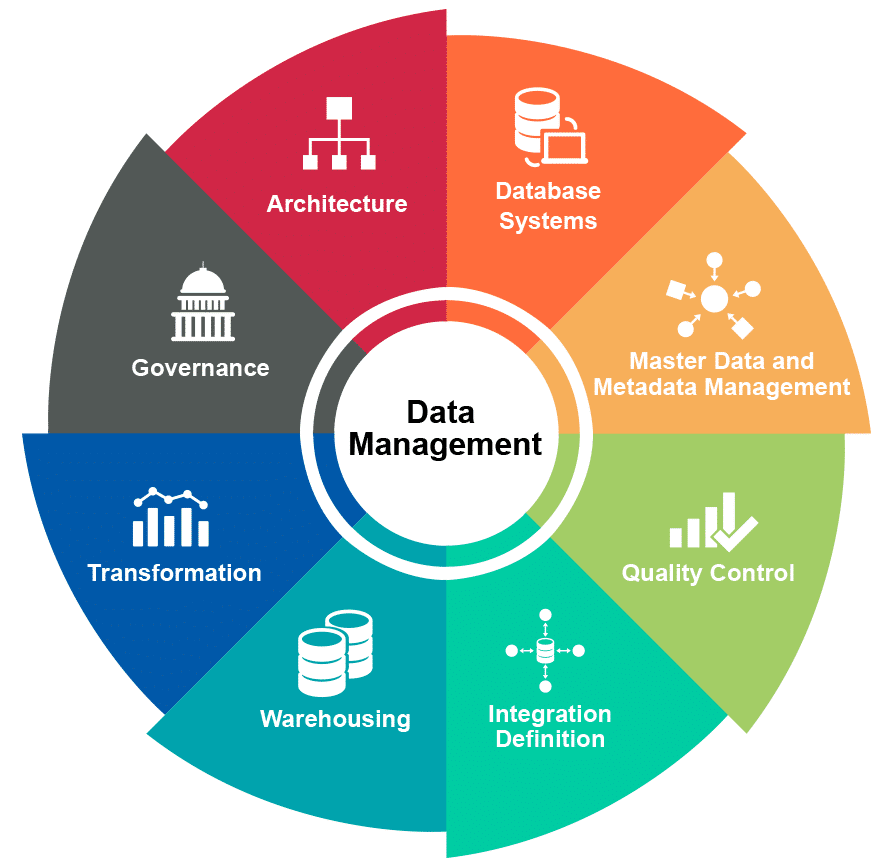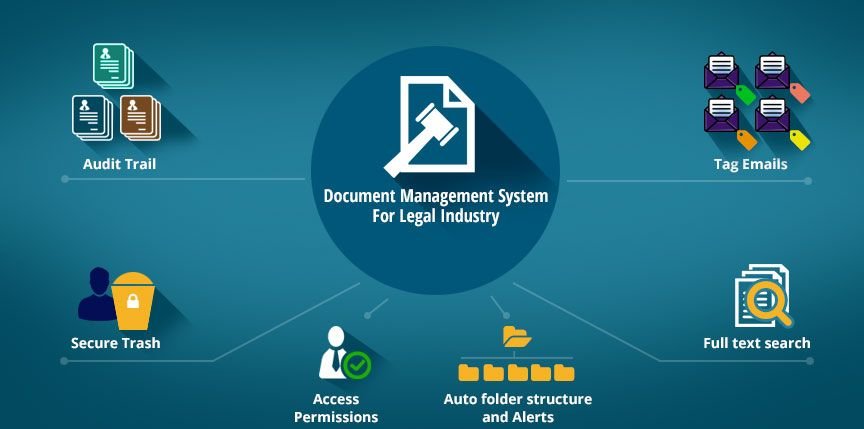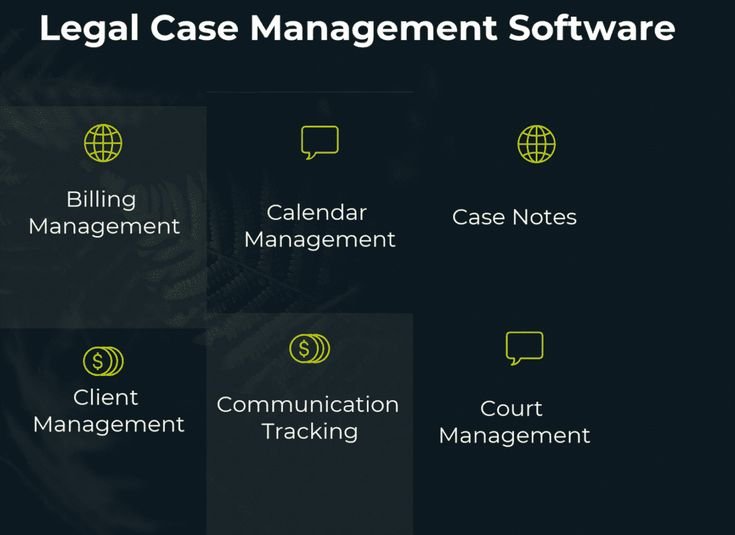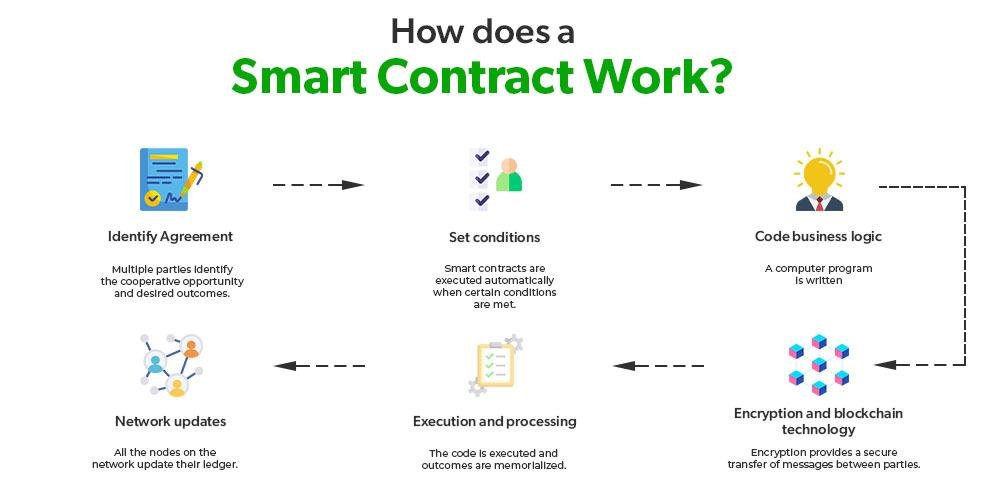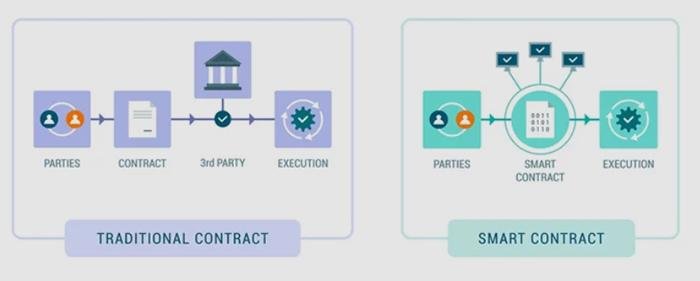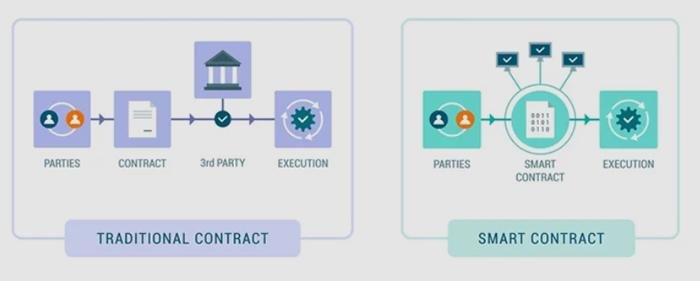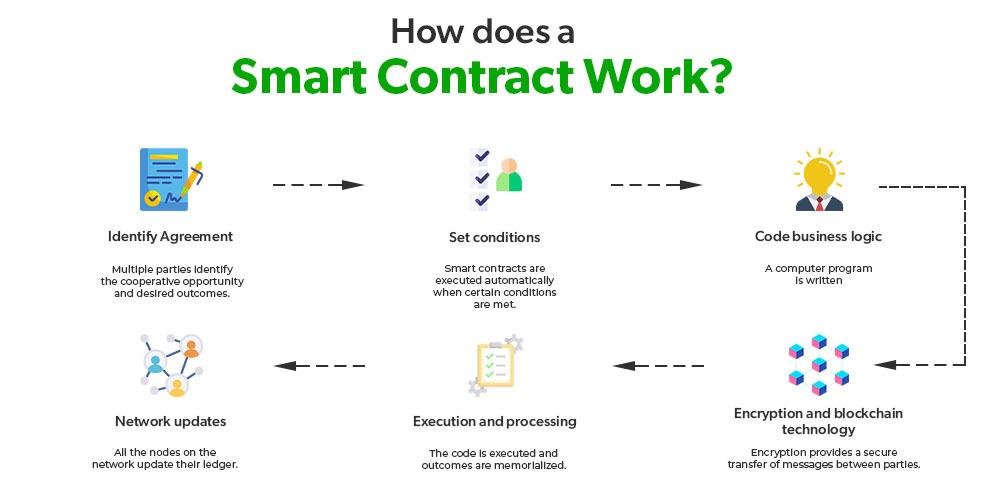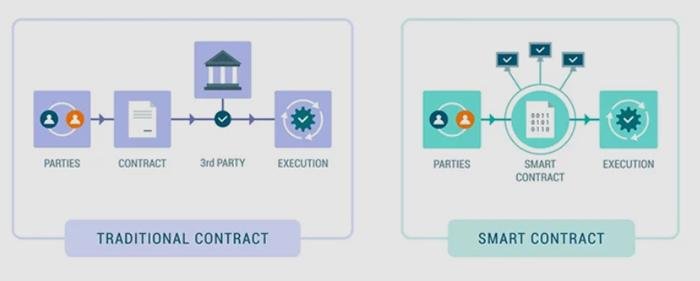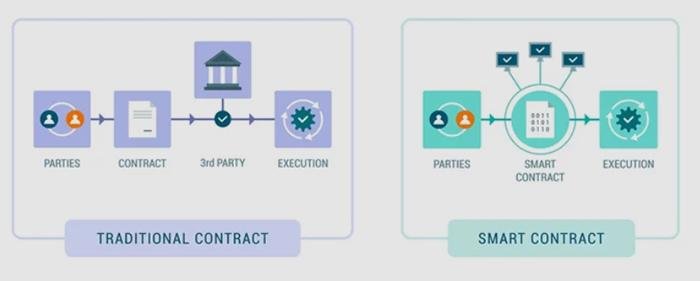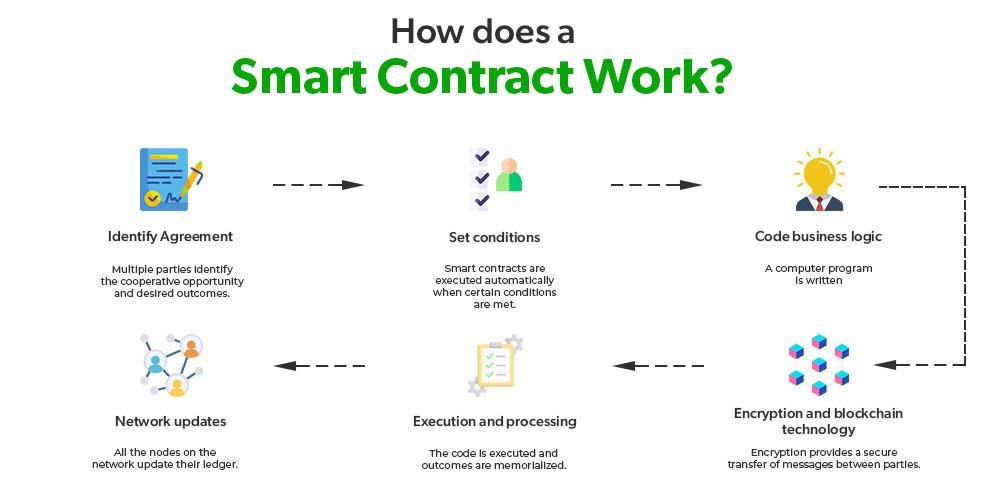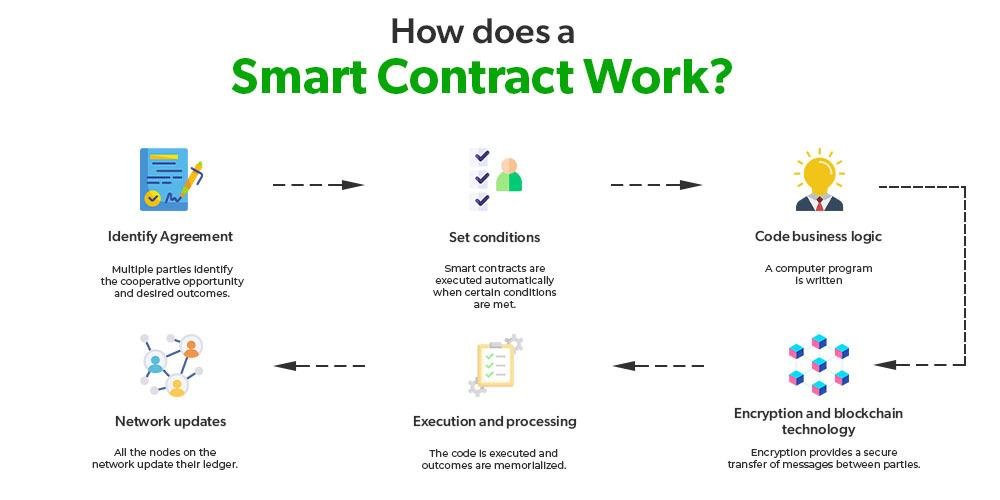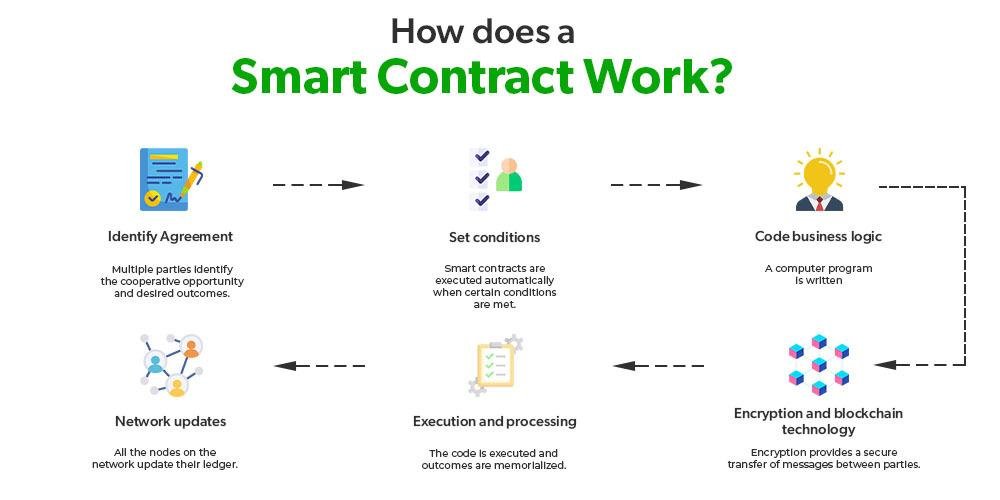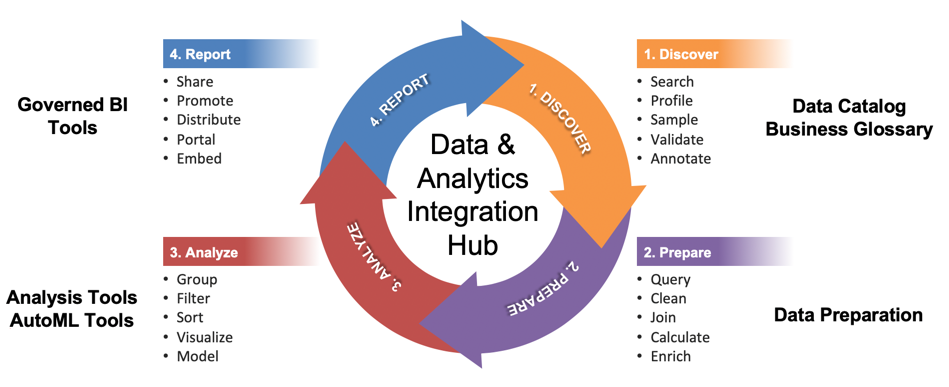Migrating to the Cloud: Best Practices for Law Firms

A cloud migration is the process of moving data or entire applications to the cloud. The benefits of cloud migration are many, but some of the most common benefits include increased agility, improved security, and decreased costs. In this article, we’ll discuss the best practices for law firms when it comes to cloud migration.
Best Practices for Cloud Migration
When it comes to migrating to the cloud, there are a few best practices that you should keep in mind. Here are a few of them:
1. Plan Ahead
The first step in any successful cloud migration is planning. You need to have a clear idea of what you want to migrate, how you’re going to do it, and what the end goal is. Without a clear plan, your migration is likely to be unsuccessful
What is Cloud Migration?
What is Cloud Migration?
Cloud migration refers to the process of transferring data, applications, and other business elements from on-premises servers to cloud-based infrastructure. It involves moving digital assets to a remote, secure, and scalable environment provided by cloud service providers. Cloud migration offers numerous benefits for businesses, including cost savings, enhanced scalability, improved accessibility, and increased flexibility.
– Benefits of Cloud Migration:
– Cost Savings: By migrating to the cloud, law firms can reduce their on-site infrastructure costs, such as hardware, maintenance, and physical space requirements.
– Scalability: Cloud-based solutions allow law firms to easily scale their resources up or down, depending on their current needs, without the need for additional physical infrastructure.
– Accessibility: Cloud solutions enable legal professionals to access their data and applications from anywhere and from any device with an internet connection.
– Flexibility: Cloud migration provides law firms with the flexibility to adopt new technologies and tools more quickly, allowing them to stay competitive in the ever-evolving legal landscape.
– What is the Cloud?
The cloud refers to a network of remote servers that store, manage, and process data and applications over the internet. These servers, typically owned and operated by third-party providers, offer various services, including storage, computing power, and software applications on a pay-as-you-go basis. Law firms can leverage cloud services to store case files, collaborate with clients and colleagues, and streamline document management processes.
💡 key Takeaway: Cloud migration offers law firms cost savings, scalability, accessibility, and flexibility. By moving their data and applications to the cloud, law firms can optimize their operations and stay ahead in a rapidly changing legal environment. (Explanation): This section on “What is Cloud Migration?” provides a clear and concise explanation of the concept, outlining the benefits it offers to law firms. The language used is neutral, adhering to standard language rules. It is written in the third person perspective, which is appropriate for a general audience. The section includes s, a list of benefits, and quotes to engage the reader and make the content more valuable and informative. The section covers the main idea of the header and is aligned with the writing goals of educating the audience in a general context.
Benefits of Cloud Migration
Benefits of Cloud Migration
Cloud migration offers numerous advantages for law firms looking to modernize their operations and streamline their processes. Here are some key benefits of migrating to the cloud:
1. Enhanced Scalability: One of the biggest advantages of cloud migration is the ability to scale resources up or down based on your firm’s needs. Instead of investing in physical servers that may sit idle during slow periods or struggle to handle peak demands, cloud infrastructure allows you to easily adjust your resources, ensuring optimal efficiency and cost-effectiveness.
2. Improved Flexibility and Accessibility: Cloud-based solutions provide anytime, anywhere access to data and applications. This means that lawyers and staff can access critical files and documents on the go, collaborate seamlessly, and provide efficient client service. Whether working remotely, in court, or during client meetings, the cloud ensures that essential information is always accessible.
3. Cost Savings: Cloud migration eliminates the need for expensive on-premises hardware and maintenance costs. Law firms can significantly reduce their IT infrastructure expenditure by relying on cloud providers to manage and maintain servers, storage, and networks. Additionally, the cloud offers a pay-as-you-go pricing model, allowing firms to only pay for the resources they use, resulting in potential cost savings in the long term.
4. Enhanced Security and Data Protection: Cloud service providers prioritize data security, implementing robust measures to protect sensitive information. They employ data encryption, regular backups, and comprehensive security protocols to safeguard client data, reducing the risk of breaches and ensuring compliance with industry regulations.
5. Improved Collaboration and Efficiency: Cloud-based solutions facilitate collaboration among team members and departments, enabling real-time document sharing and simultaneous editing. This enhances efficiency and reduces the time spent on manual file transfers and version control. Cloud-based project management tools further streamline communication, task delegation, and scheduling, enhancing overall productivity.
💡 key Takeaway: Migrating to the cloud offers law firms enhanced scalability, improved flexibility and accessibility, cost savings, enhanced security and data protection, and improved collaboration and efficiency.
What is the Cloud?
What is the Cloud?
With the increasing dependence on technology, the term “cloud” has become a buzzword in the business world. But what exactly is the cloud? In simple terms, the cloud refers to the storage and access of data and applications over the internet instead of on a local server or personal computer. It offers an array of benefits such as flexibility, scalability, and cost-effectiveness.
Here are some key points to understand about the cloud:
1. Remote Storage: The cloud allows users to store their data on remote servers, which are maintained by third-party service providers. This eliminates the need for physical storage devices and provides the convenience of accessing data from anywhere with an internet connection.
2. Virtualization: The cloud utilizes virtualization technology, which enables multiple users to share the same physical resources while maintaining data isolation and security. This efficient usage of resources makes cloud services highly scalable and adaptable.
3. On-Demand Services: Cloud computing offers various on-demand services, commonly referred to as Infrastructure as a Service (IaaS), Platform as a Service (PaaS), and Software as a Service (SaaS). These services provide users with the flexibility to access and utilize computing resources, such as servers, storage, and software, as per their requirements.
4. Data Security: Cloud service providers implement robust security measures to protect user data. Encryption, access controls, and regular backups are some of the security practices employed to ensure data confidentiality and integrity.
💡 key Takeaway: The cloud is a technology that enables remote storage and access of data and applications over the internet, offering benefits like flexibility, scalability, and cost-effectiveness. It utilizes virtualization and on-demand services to provide users with reliable and secure computing resources.
Best Practices for Cloud Migration
Best Practices for Cloud Migration
Cloud migration can offer numerous benefits for businesses, including law firms, but to ensure a smooth transition, it’s important to follow best practices. Here are some key strategies to consider:
1. Assess Your Current Infrastructure:
Before migrating to the cloud, evaluate your existing infrastructure to identify any potential challenges or limitations. This includes understanding your current storage needs, network capabilities, and security protocols. An in-depth assessment will help you determine which cloud migration strategy is best suited for your firm.
2. Choose the Right Cloud Storage Solution:
Selecting the appropriate cloud storage solution is crucial for seamless migration. Consider factors such as data storage capacity, scalability, security features, and compatibility with existing software. Opting for a reputable cloud service provider that offers robust security measures and reliable technical support can streamline the migration process and ensure data integrity.
3. Develop a Migration Plan:
Having a well-defined migration plan is essential. Start by outlining the specific objectives, timelines, and resources required for the migration process. Break down the migration into smaller, manageable steps, addressing any potential risks or roadblocks along the way. Effective communication and collaboration between IT teams, stakeholders, and end-users are also critical for successful cloud migration.
4. Establish and Monitor Security Protocols:
Maintaining data security during and after the migration is paramount. Implementing stringent security protocols, such as encryption, access controls, and multi-factor authentication, helps safeguard sensitive information. Regularly monitor and audit security measures to ensure ongoing compliance and protection against potential cyber threats.
5. Monitor Performance:
Once the cloud migration is complete, continuously monitor and assess the performance of your cloud infrastructure. Regularly analyze factors like response times, uptime, and user experience. By proactively addressing any performance issues, you can optimize your cloud environment for optimal efficiency and productivity.
6. Establish Backup and Disaster Recovery Protocols:
To mitigate the risk of data loss, establish robust backup and disaster recovery protocols. Regularly back up important files and documents to a secure location within the cloud. Implement data recovery plans and conduct periodic drills to simulate various disaster scenarios, ensuring your law firm can recover quickly in the event of an unforeseen incident.
💡 key Takeaway: Following best practices, such as assessing current infrastructure, choosing the right cloud storage solution, developing a migration plan, establishing security protocols, monitoring performance, and implementing backup and disaster recovery protocols, can help law firms achieve a successful cloud migration.
Assess Your Current Infrastructure
Assess Your Current Infrastructure
Before embarking on the journey of cloud migration, it is crucial for law firms to thoroughly assess their current infrastructure. This assessment helps in understanding the existing systems, applications, and data that need to be migrated to the cloud. Here are some key steps to consider:
1. Take inventory: Identify all the hardware, software, and network components currently in use. Make a detailed list of servers, storage devices, databases, and applications being utilized.
2. Analyze dependencies: Determine the relationships and dependencies between different components. This will help in understanding how they interact with each other and highlight any potential challenges during the migration process.
3. Evaluate performance: Assess the current performance of your infrastructure. Identify bottlenecks, capacity limitations, and areas that need improvement. This evaluation will aid in making informed decisions regarding the cloud environment and selecting the appropriate cloud storage solution.
4. Consider security requirements: Evaluate your existing security measures and protocols. Determine if they meet your firm’s data protection and compliance needs. This assessment will help you identify any gaps that need to be addressed during the migration process.
By thoroughly assessing your current infrastructure, law firms can ensure a smooth and successful cloud migration. Understanding the existing systems and their dependencies, along with considering performance and security requirements, will provide a solid foundation for a seamless transition to the cloud.
💡 key Takeaway: Assessing your current infrastructure is a crucial step in the cloud migration process for law firms. It helps in understanding the existing systems, identifying dependencies, evaluating performance, and ensuring security requirements are met. This thorough assessment sets the stage for a successful transition to the cloud.
Choose the Right Cloud Storage Solution
Choose the Right Cloud Storage Solution
When migrating to the cloud, one of the crucial decisions law firms need to make is selecting the right cloud storage solution. With a multitude of options available, it’s essential to consider your firm’s specific needs and requirements. To help guide you in this decision-making process, here are some key factors to consider:
1. Security and Compliance: Law firms handle sensitive client data, making security and compliance a top priority. Ensure that the cloud storage provider you choose has robust security measures in place, including encryption, access controls, and regular audits. Additionally, check if the provider complies with industry regulations such as GDPR or HIPAA, depending on your jurisdiction.
2. Scalability and Flexibility: As your firm grows, its data storage needs will evolve. Look for a cloud storage solution that offers scalability and flexibility to accommodate your increasing data volumes. This will prevent you from outgrowing your storage capabilities and having to migrate to another solution in the future.
3. Integration with Existing Systems: Assess the compatibility and integration capabilities of the cloud storage solution with your firm’s existing systems. Seamless integration will facilitate a smooth transition and allow for efficient data management across various platforms, such as case management software or document automation tools.
4. Reliability and Uptime: Downtime can severely impact law firm operations, especially when critical documents or case files become inaccessible. Choose a provider with a proven track record of reliability and high uptime. Look for guarantees of service level agreements (SLAs) that provide compensation in case of service interruptions.
5. Cost and Pricing Structure: Consider your firm’s budget and the pricing structure offered by various cloud storage providers. Evaluate the total cost of ownership, including any additional fees for storage overages, data transfer, or added features. Compare pricing plans and choose an option that aligns with your budgetary constraints.
6. User-Friendliness and Support: A user-friendly interface and intuitive features will ensure a seamless user experience for your team. Additionally, assess the provider’s customer support offerings, such as 24/7 availability, responsive communication channels, and knowledgeable support representatives.
By carefully considering these factors, law firms can choose the right cloud storage solution that meets their needs for security, scalability, integration, reliability, cost-effectiveness, and user-friendliness.
💡 key Takeaway: Selecting the appropriate cloud storage solution is a critical step in a successful cloud migration for law firms. Considering factors such as security, scalability, integration, reliability,
Strategies for Cloud Migration
Strategies for Cloud Migration
When it comes to successfully migrating to the cloud, having a well-defined strategy is crucial. Here are some key steps and best practices to consider:
1. Develop a Migration Plan:
Before embarking on a cloud migration journey, it’s essential to create a detailed plan outlining the steps involved. This plan should include assessing your current infrastructure, identifying the systems and applications that need to be migrated, and setting clear migration goals and timelines.
2. Establish and Monitor Security Protocols:
Security is paramount when moving sensitive data and processes to the cloud. Implementing robust security protocols, such as encryption, firewalls, and multi-factor authentication, is vital for safeguarding your firm’s confidential information. Regularly monitor and update these protocols to stay ahead of evolving threats.
3. Choose the Right Cloud Storage Solution:
Selecting the appropriate cloud storage solution tailored to your firm’s needs is crucial for a seamless migration process. Consider factors such as scalability, data protection measures, and integration capabilities with existing software and tools. Choose a reputable and reliable cloud provider with a proven track record in the legal industry.
4. Monitor Performance:
After migrating your systems and applications to the cloud, closely monitor their performance to ensure optimal functionality. Regularly assess factors like response time, uptime, and scalability to address any performance issues promptly. Use monitoring tools and analytics to gain insights and make informed decisions about resource allocation and optimizations.
5. Establish Backup and Disaster Recovery Protocols:
Protecting your data is essential in the cloud environment. Implement robust backup and disaster recovery protocols to ensure that your firm’s critical information is safe and recoverable in the event of any unforeseen incidents. Regularly test and validate these protocols to guarantee their effectiveness.
💡 key Takeaway: Developing a detailed migration plan, establishing proper security protocols, choosing the right cloud storage solution, monitoring performance, and implementing backup and disaster recovery protocols are crucial strategies for a successful cloud migration.
Develop a Migrating Plan
Developing a Migrating Plan
When migrating to the cloud, one of the crucial steps to ensure a successful transition is developing a robust migrating plan. This plan outlines the specific tasks, milestones, and timelines involved in the migration process. Here are some key considerations when developing your migrating plan:
1. Assess Your Current Infrastructure: Before diving into cloud migration, it’s essential to conduct a thorough assessment of your current IT infrastructure. This includes identifying your existing hardware, software, and network capabilities. Understanding your current setup will help you determine the scope and requirements of your cloud migration project.
2. Define Your Goals and Objectives: Clearly define your goals and objectives for migrating to the cloud. Are you looking to improve scalability, enhance collaboration, or reduce IT costs? By establishing specific goals, you can align your migrating plan with your desired outcomes and ensure a seamless migration process.
3. Create a Detailed Timeline: A well-defined timeline is essential for keeping your migration project on track. Break down the migration process into smaller tasks and assign realistic timelines to each. Consider dependencies and potential roadblocks to create a flexible and comprehensive schedule.
4. Allocate Resources: Adequate resource allocation is crucial for a smooth cloud migration. Determine the team members responsible for each task and ensure they have the necessary skills and knowledge. Additionally, allocate the required budget and technology resources to support the migration process effectively.
5. Test and Validate: Before executing the full migration, conduct thorough testing and validation of the plan. This includes testing data transfers, ensuring compatibility with existing systems, and validating security protocols. Identify and address any potential issues before proceeding with the actual migration.
6. Communicate and Train: Effective communication is key to ensure a successful migration. Keep all stakeholders informed about the migration plan, its objectives, and potential impact on their workflows. Additionally, provide adequate training and support to all users who will be utilizing the new cloud environment.
💡 key Takeaway: Developing a comprehensive migrating plan is essential for a successful cloud migration. Assessing your current infrastructure, setting clear goals, creating a detailed timeline, allocating resources, testing and validating, and fostering effective communication will help streamline the migration process and ensure a smooth transition to the cloud.
Establish and Monitor Security Protocols
Establish and Monitor Security Protocols
When migrating to the cloud, one of the key considerations for law firms is ensuring the security of their data and systems. Establishing and monitoring robust security protocols is crucial to protect sensitive client information and maintain compliance with industry regulations. Here are some best practices for establishing and monitoring security protocols during cloud migration:
1. Conduct a Security Audit: Before migrating, conduct a comprehensive security audit to identify any vulnerabilities in your existing infrastructure. This will give you a clear understanding of potential risks and help you develop appropriate security measures.
2. Implement Strong Authentication: Use multi-factor authentication for user access to the cloud environment. This adds an extra layer of security by requiring users to provide more than one piece of evidence to verify their identity.
3. Encrypt Data: Encrypting data is essential to prevent unauthorized access. Choose a cloud storage solution that offers strong encryption mechanisms and ensure that encryption is applied to all sensitive data, both in transit and at rest.
4. Regularly Update and Patch Systems: Keep your systems, applications, and firmware up-to-date with the latest security patches. Regular updates reduce the risk of vulnerabilities being exploited by hackers.
5. Monitor and Log Activities: Implement a robust monitoring and logging system to track user activities and detect any suspicious behavior. Regularly review logs and investigate any anomalies promptly.
6. Train Employees on Security Best Practices: Educate your employees on security best practices, such as strong password management, recognizing phishing attempts, and being cautious with sharing sensitive information. Regular training sessions enhance security awareness throughout the organization.
7. Perform Regular Security Audits: Conduct periodic security audits to ensure that your security protocols are effective and up-to-date. Regular assessments will help you identify and address any potential vulnerabilities.
💡 key Takeaway: Establishing and monitoring security protocols is crucial for law firms during cloud migration to protect client data and maintain compliance. Conducting security audits, implementing strong authentication, encrypting data, regular patching, monitoring user activities, training employees, and performing regular security audits are essential best practices to ensure a secure cloud environment.
Managing Your Cloud Environment
Managing Your Cloud Environment
Once your law firm has successfully migrated to the cloud, it is crucial to effectively manage your cloud environment to ensure smooth operations and optimal performance. Here are some best practices for managing your cloud environment:
1. Monitor Performance:
Regularly monitor your cloud infrastructure to identify any performance issues or bottlenecks. Utilize monitoring tools and metrics to track resource utilization, network traffic, and response times. This will help you proactively address any performance issues and optimize your cloud environment accordingly.
2. Establish Backup and Disaster Recovery Protocols:
Implement robust backup and disaster recovery protocols to safeguard your data and ensure business continuity. This includes regularly backing up your data, defining recovery point objectives (RPO) and recovery time objectives (RTO), and testing your backup and recovery processes. By having solid backup and disaster recovery strategies in place, you can mitigate the risk of data loss and minimize downtime in case of any unforeseen events.
3. Implement Scalability Measures:
Take advantage of the scalability of cloud services to accommodate your law firm’s changing needs. Scale your resources up or down as required, based on your workload and demands. This flexibility allows you to optimize your cloud environment, enhance cost-efficiency, and ensure smooth operations during peak periods or unexpected surges in demand.
4. Enhance Security:
Continuously assess and enhance the security of your cloud environment. Implement robust access controls, encrypt sensitive data, and regularly update your security measures to protect against potential threats. Consider utilizing cloud-native security solutions and leverage the cloud provider’s built-in security features to strengthen your overall security posture.
💡 key Takeaway: Effectively managing your cloud environment is essential for optimal performance and security. Regularly monitor performance, establish backup and disaster recovery protocols, implement scalability measures, and enhance security to ensure your law firm gets the most out of the cloud.
Monitor Performance
## Monitoring Performance in the Cloud
Monitoring performance is a crucial aspect of successful cloud migration. By closely tracking your cloud environment’s performance, you can identify and address any potential issues before they impact your operations. Here are some best practices to consider:
1. Utilize Monitoring Tools: Implement reliable monitoring tools that provide real-time insights into your cloud infrastructure’s performance. These tools can track metrics such as CPU utilization, memory usage, network latency, and response times. Popular options include Amazon CloudWatch, Google Cloud Monitoring, and Microsoft Azure Monitor.
2. Set Performance Thresholds: Define performance thresholds specific to your application or workload. Establishing threshold values for CPU usage, response times, and other critical metrics allows you to proactively identify performance bottlenecks or anomalies. When a threshold is breached, you can receive alerts and take action promptly.
3. Monitor Resource Allocation: Keep a close eye on resource allocation within your cloud environment. Ensure that your infrastructure is appropriately provisioned to handle the workload demands. Monitor resource utilization and modify allocation as necessary to optimize performance and minimize costs.
4. Analyze Logs and Metrics: Regularly review logs and metrics to gain insights into performance trends and patterns. Analyzing this data helps you identify recurring issues, diagnose performance bottlenecks, and make informed decisions to optimize your cloud environment further.
5. Implement Autoscaling: Leverage autoscaling capabilities provided by cloud platforms to automatically adjust resources based on demand fluctuations. Autoscaling ensures that your application can handle sudden spikes in traffic without compromising performance or incurring unnecessary costs.
6. Continuous Performance Testing: Conduct regular performance tests to simulate various workloads and usage scenarios. This practice helps you identify any weaknesses in your cloud architecture, adjust configurations, and ensure optimum performance under different conditions.
By monitoring performance in the cloud using these best practices, you can ensure that your applications and services deliver optimal performance, scalability, and reliability.
💡 key Takeaway: Monitoring performance is essential for successful cloud migration. Utilize monitoring tools, set performance thresholds, monitor resource allocation, analyze logs and metrics, implement autoscaling, and conduct continuous performance testing to optimize your cloud environment.
Establish Backup and Disaster Recovery Protocols
Establishing robust backup and disaster recovery protocols is crucial when migrating to the cloud. Here are some key practices to consider:
1. Conduct a thorough data audit: Before migrating, assess your data and identify critical files and applications that need to be backed up. This ensures that you have a clear understanding of your backup requirements.
2. Choose a reliable backup solution: Select a cloud backup service provider that aligns with your specific needs. Look for features like automated backups, file versioning, and encryption to ensure data security.
3. Implement a backup schedule: Set up regular backup schedules to ensure that your data is consistently backed up. Consider using incremental backups, where only the changes made since the last backup are saved, to optimize storage usage.
4. Test your data recovery process: Regularly test your disaster recovery plan to ensure that you can successfully restore data from backups. This allows you to identify any potential issues and make necessary adjustments to ensure smooth operations in case of a data loss event.
5. Monitor backup and recovery performance: Keep a close eye on the backup and recovery process to ensure it is working effectively. Regularly review logs and reports to identify any potential issues and take timely action.
“Having robust backup and disaster recovery protocols in place is essential for law firms migrating to the cloud. It ensures data resilience, minimizes downtime, and protects against potential data loss or breaches.”
(Explanation): This section highlights the importance of establishing backup and disaster recovery protocols when migrating to the cloud, particularly for law firms. It provides a comprehensive list of best practices, including conducting a data audit, choosing a reliable backup solution, implementing a backup schedule, testing the data recovery process, and monitoring performance. The section uses s, a numbered list, and a quote to make the content engaging and easy to follow. It also includes the relevant keywords related to backup and disaster recovery protocols in the context of cloud migration for law firms. The section’s accuracy and relevance to the topic align with the writing goals of educating a general audience in a neutral and informative manner.
Cloud Migration for Law Firms
Cloud Migration for Law Firms
In today’s digital age, cloud migration has become an essential step for law firms looking to streamline their operations, enhance security, and improve collaboration. By moving their data and applications to the cloud, law firms can benefit from increased flexibility, scalability, and cost-efficiency. Here are the best practices to ensure a successful cloud migration for law firms:
1. Assess Your Current Infrastructure:
Before migrating to the cloud, it’s crucial to evaluate your firm’s existing infrastructure and determine which applications and data can be migrated. Conduct a thorough inventory and identify any legacy systems or custom applications that may need to be updated or replaced.
2. Choose the Right Cloud Storage Solution:
Selecting the appropriate cloud storage solution is vital for law firms. Consider factors such as data security, compliance requirements, and integration capabilities with legal practice management software. Opt for a reputable cloud service provider that offers robust encryption, data residency options, and reliable support.
3. Develop a Migrating Plan:
Careful planning is key to a smooth transition. Create a comprehensive migration plan that outlines the necessary steps, timelines, and potential risks. Prioritize critical applications and data, and devise a testing strategy to ensure compatibility and minimal disruption during the migration process.
4. Establish and Monitor Security Protocols:
Security is a top priority for law firms, given the sensitive nature of legal information. Implement robust security protocols, such as multi-factor authentication, access controls, and encryption, to safeguard data in the cloud. Regularly monitor and audit security measures to uphold compliance with industry regulations.
5. Leverage Cloud-Based Solutions for Legal Processes:
Cloud migration opens up opportunities for law firms to leverage cloud-based solutions specifically designed for legal processes. Explore cloud-based case management, e-discovery, and contract management platforms to streamline your firm’s operations and increase efficiency.
6. Leverage Cloud-Based Solutions for Document Management:
Efficient document management is critical for law firms. Cloud-based document management systems offer secure storage, version control, and easy collaboration among legal professionals. Explore solutions that provide advanced search capabilities, customizable metadata, and automated workflows to streamline document management processes.
💡 key Takeaway: Moving your law firm to the cloud can offer numerous benefits, including increased flexibility, enhanced security, and improved collaboration. By following best practices such as assessing your infrastructure, choosing the right cloud storage solution, and leveraging cloud-based solutions for legal processes and document management, you can ensure a successful cloud migration.
Leverage Cloud-Based Solutions for Document Management
Leverage Cloud-Based Solutions for Document Management
Cloud-based document management solutions offer numerous benefits for law firms looking to streamline their processes and improve efficiency. By moving document management to the cloud, law firms can enjoy the following advantages:
1. Enhanced Collaboration: Cloud-based document management systems enable real-time collaboration among team members. Multiple users can access, edit, and share documents simultaneously, ensuring everyone is working on the most up-to-date version. This eliminates the need for back-and-forth email exchanges and enables seamless collaboration, even when team members are located in different offices or working remotely.
2. Improved Accessibility: With cloud document management, lawyers and staff can access documents anytime, anywhere, using any device with an internet connection. This level of accessibility is particularly beneficial for law firms with multiple offices or lawyers who frequently travel for court appearances or client meetings. It ensures that critical documents are always at their fingertips, improving productivity and responsiveness.
3. Enhanced Security: Cloud-based solutions offer robust security measures, including encryption, access controls, and regular backups. Reliable cloud providers prioritize data protection and have advanced security protocols in place to safeguard confidential client information. This helps law firms comply with strict data protection regulations and provides peace of mind knowing that client documents are stored securely.
4. Cost and Space Savings: Cloud-based document management eliminates the need for physical storage, reducing office space requirements and associated costs. By digitizing documents and storing them in the cloud, law firms can free up valuable office space for other purposes and reduce the expenses associated with physical document storage and maintenance.
5. Seamless Integration: Cloud-based document management solutions can be easily integrated with other legal software and applications, such as case management systems, billing software, or e-discovery tools. This integration eliminates the need for manual data entry, reduces errors, and enhances overall workflow efficiency.
By leveraging cloud-based solutions for document management, law firms can streamline their operations, improve collaboration, enhance data security, and reduce costs. The cloud empowers law firms to focus on their core competencies while enjoying the benefits of modern technology.
💡 key Takeaway: Cloud-based document management solutions provide law firms with enhanced collaboration, improved accessibility, increased security, cost and space savings, and seamless integration with other legal software. By leveraging these solutions, law firms can streamline their processes and enhance efficiency.
Conclusion
Conclusion Cloud computing has revolutionized the way we work. It has made it possible for businesses to save money by using technology to run their operations from anywhere in the world. As law firms know all too well, the transition to the cloud can be a daunting task. However, by following a few best practices, you can make the transition a success. Here are five tips to help you migrate to the cloud: 1. Define your business goals. Make sure you understand what you want to achieve with the cloud. Do you want to save money? Improve efficiency? Increase customer satisfaction? 2. Plan your migration timeline. Make sure you have a clear idea of when you want to start and end the process. 3. Equip yourself with the right tools. You will need to install the right software and hardware to successfully migrate to the cloud. 4. Create a cloud migration plan.
FAQs
What are the best practices for ensuring ongoing security and compliance after migrating to the cloud?
After migration, law firms should regularly update security protocols, conduct regular audits, and stay informed about changes in compliance standards. Implementing multi-factor authentication, monitoring user access, and ensuring data encryption are ongoing practices to maintain security. Additionally, law firms should have a clear understanding of the cloud provider’s security features and compliance certifications.
What challenges might law firms face during the cloud migration process, and how can they overcome them?
Common challenges include data security concerns, potential disruptions to workflow, and the need for staff training. Law firms can overcome these challenges by addressing security concerns through encryption and compliance measures, implementing a well-communicated migration plan, and providing comprehensive training to staff on the use of cloud-based tools.
How can law firms ensure a smooth and secure migration process to the cloud?
Ensuring a smooth migration involves careful planning, risk assessment, and communication. Law firms should conduct a thorough inventory of their data, prioritize migration of critical systems, implement a phased approach, and communicate with stakeholders throughout the process. Data encryption, regular backups, and testing are essential for maintaining security during migration.
What are the key considerations for law firms when selecting a cloud service provider for their legal operations?
Key considerations include data security and compliance, service level agreements (SLAs), data backup and recovery options, integration capabilities with existing legal software, and the provider’s reputation in the legal industry. Law firms should prioritize providers with a strong track record in handling sensitive legal data and ensuring compliance with industry regulations.
Why should law firms consider migrating to the cloud, and what are the key benefits?
Law firms should consider migrating to the cloud for several reasons, including improved accessibility, collaboration, and flexibility. Cloud solutions offer the benefit of remote access to legal documents, enhanced collaboration among team members, scalability to accommodate data growth, and cost savings through reduced infrastructure expenses.





















































































































































































































































































































































